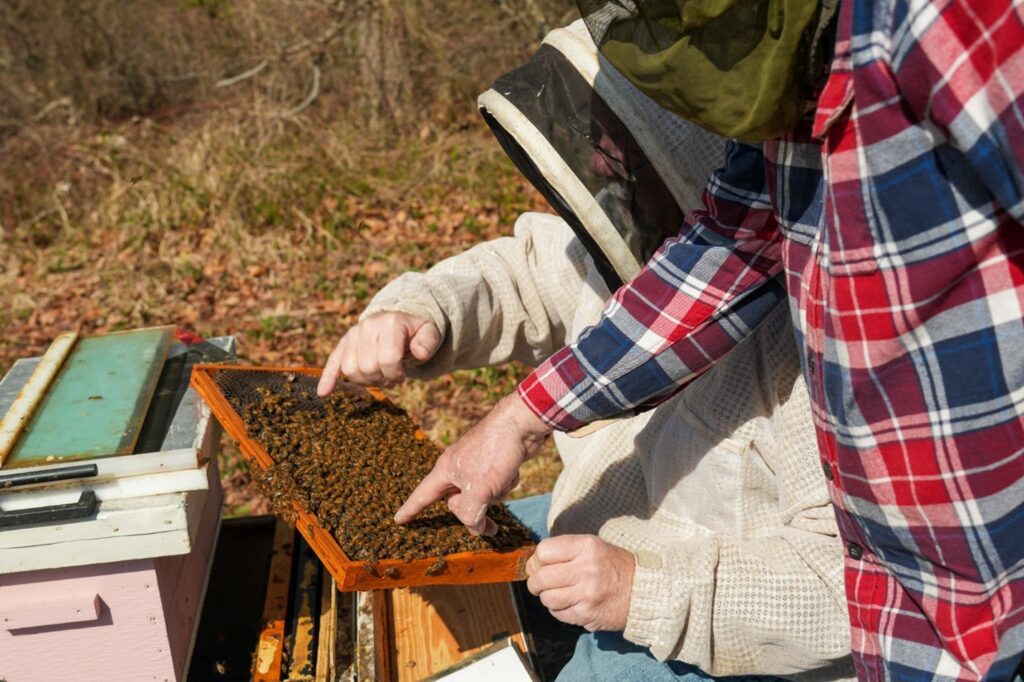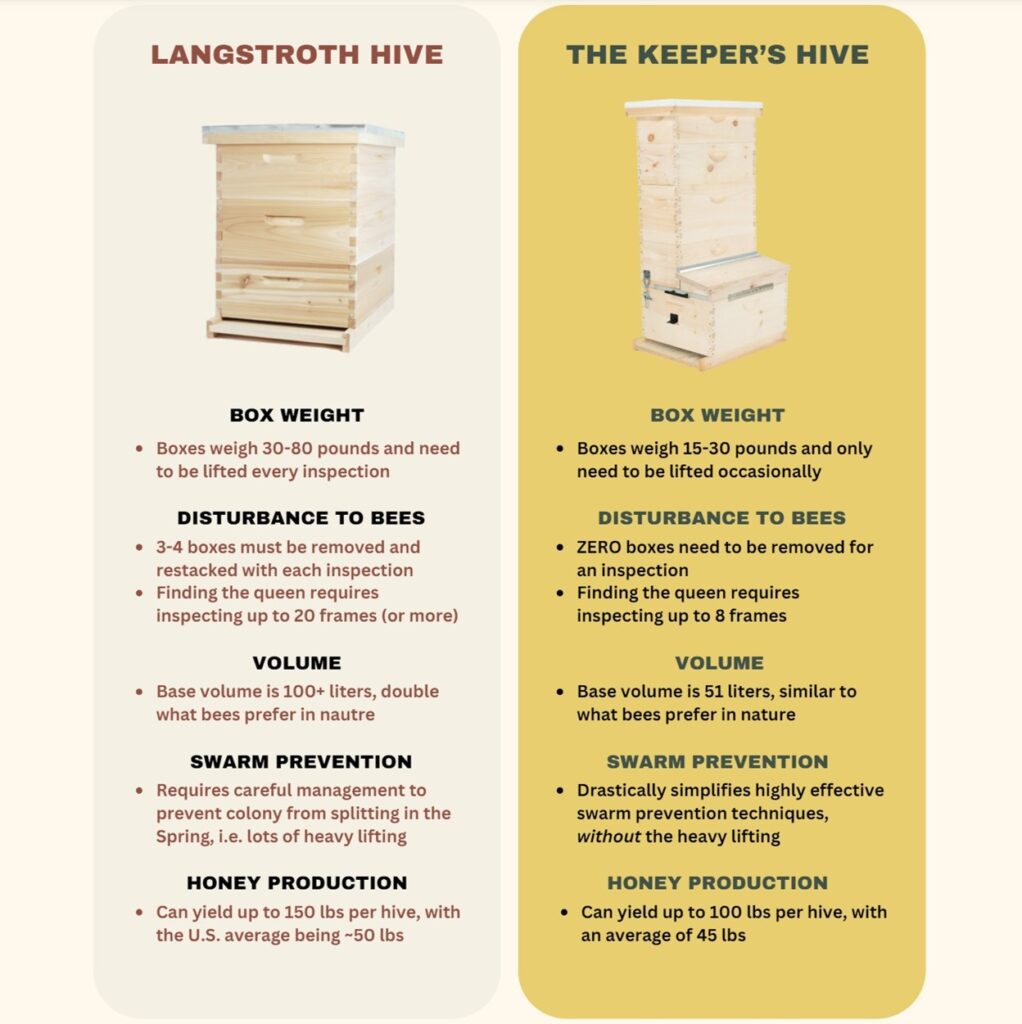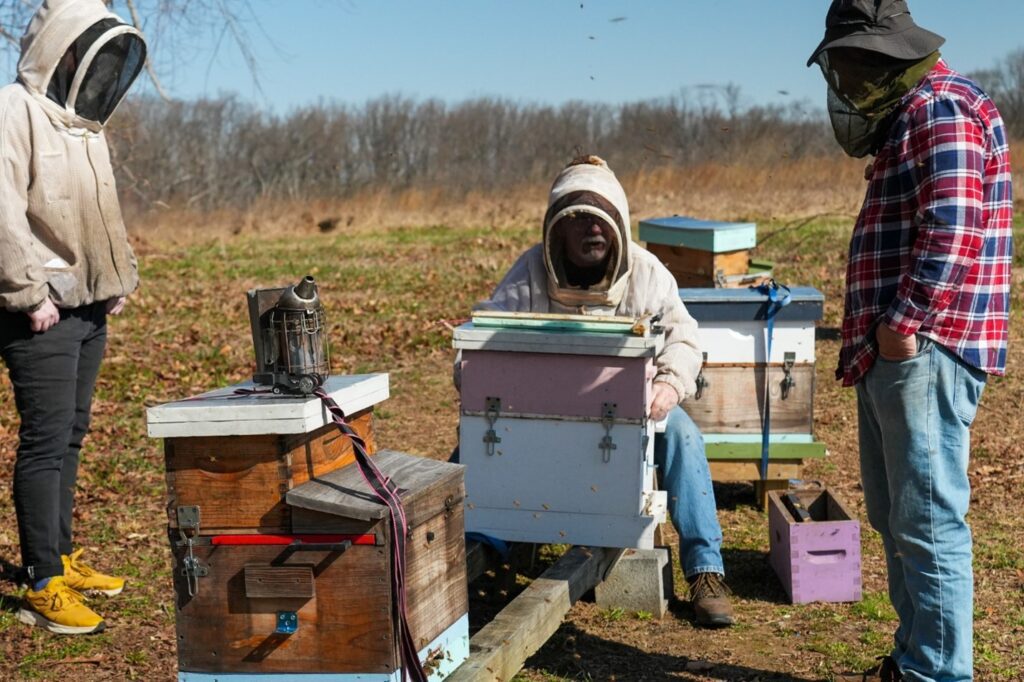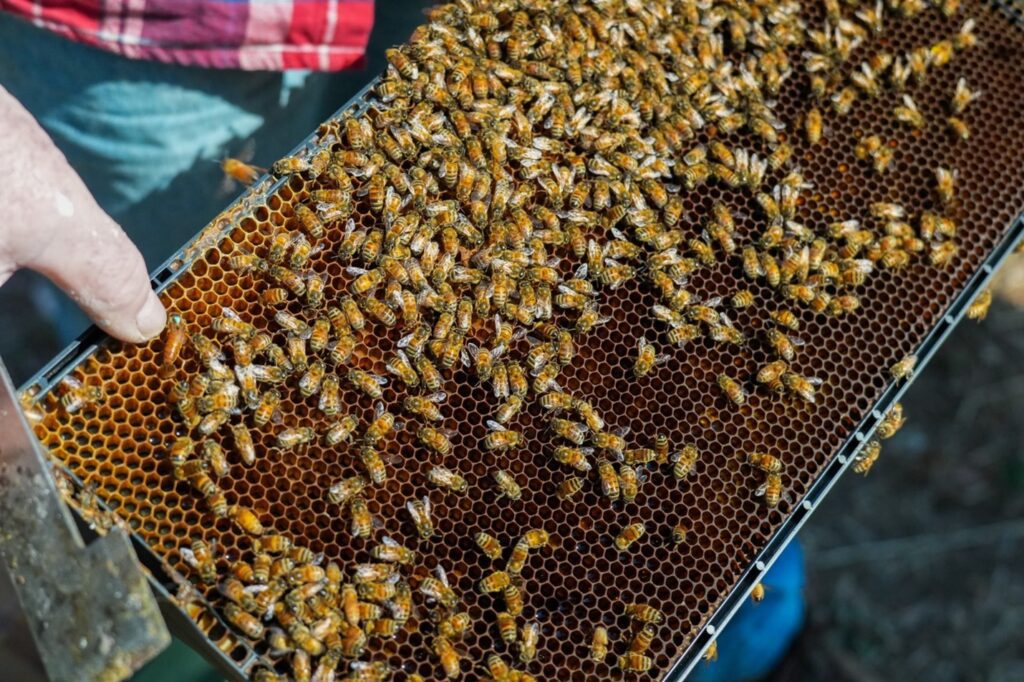As Winterthur’s dedicated beekeeper for four years, George Datto is more than just a honey producer. He’s also an advocate for sustainable beekeeping practices.
The honey from the apiary is sold in the Museum Store at Winterthur Museum, Garden & Library. Perhaps more importantly, the apiary keeps vital pollinators in the gardens and natural lands on the nearly 1,000-acre estate.
In honor of World Bee Day on May 20, we’re telling you a little about what George has been doing.
Alongside his involvement in beekeeping and educational initiatives at Winterthur, George and a friend have also been brewing a revolutionary idea since 2016: a new kind of beehive designed to alleviate the labor-intensive nature of traditional methods.
When George started at Winterthur, he was already working on a design for a new kind of beehive, so he moved five prototypes onto the Winterthur property.

George began as a hobbyist beekeeper in 2008 with an apiary at his farm in southeastern Pennsylvania. He is a co-founder of Revolution Bees, which promotes sustainable beekeeping and honeybee education and is one of the top regional producers of local honey and artisanal honey products.
He also is President of the Chester County Beekeepers Association (CCBA), where he created the apprentice and citizen science programs for the 700-member organization. He also leads the queen mating program and manages the CCBA nucleus colony apiary, which helps promote and distribute high-quality local genetics.
The hive prototype came about in 2016 when George, a retired pediatrician, invited Nat Wolfe, a retired master carpenter, to come along one day as George checked his beehives. Nat was immediately struck by how labor-intensive it was to perform hive maintenance as George wrestled with boxes of bee- and honey-filled hive frames that each weighed 60 to 70 pounds.
With Langstroth hives—the global standard—the boxes need to be removed and restacked with each hive inspection. So, Nat and George put their heads together and came up with a new design. Instead of lifting entire boxes of bee-filled frames, their patented design allows beekeepers to open a roof and move frames around individually.
In the spring, beekeepers must inspect their hives every one to two weeks to prevent swarming, which is when part of a hive leaves to reproduce its current hive elsewhere.
Bees that swarm are as equally likely to find a house as they are a tree. When that happens, it will usually spell the end of that new hive in the form of a pest control expert, George explained. “The bees aren’t thinking about your honey production; they’re thinking about survival,” George said of swarming.
Bees swarm because the brood chamber becomes too crowded, Nat added. “If we lived in a small house and we had five or six kids and kept having kids, you’d eventually need a new house,” he said. “It’s the exact same principle.”
The usual swarm-control technique is to move some brood frames to the top and replace them with empty frames at the bottom. The hive grows as the season continues. “The benefit of our hive is it takes the lifting out of it,” Nat said. “You open the door, move the frames around, and close the door.”
The innovative approach not only reduces stress on the bees but also empowers beekeepers to manage their hives with ease, said entrepreneur Dave McNeeley, who is working with George and Nat to launch their company, The Keeper’s Hive. “You can do more management, more often, with more confidence,” Dave said. It’s especially desirable for beekeepers with busy schedules or older keepers who want to lift less, he added.

As they exhibited their designs to other beekeepers, they received a lot of interest. The pandemic slowed their progress as beekeeping shows were put on hold, but they’re moving forward again. There are now nine of their prototypes at Winterthur.
Over the past two winters, the survival rate of the populations in Winterthur’s hives was 100 percent. “That’s atypical, for sure,” George said. In our region, some hives might lose 30 to 50 percent of their bee populations due to poor nutrition and disease, he said.
With a call to action for interested individuals to join their journey by subscribing to emails through www.thekeepershive.com, the trio invites enthusiasts to witness the evolution of beekeeping firsthand and potentially contribute to the buzz surrounding their burgeoning enterprise by donating to their crowdfunding campaign in June 2024.

